Animals of great depths: the abyssal zone
Hi #AmazingNature Community!
Always wishing everyone a good day. Let's remember that the sun rises for @everyone!😃🌞
Once again, I bring you content that I consider to be of quality, this takes several hours of reading, comprehension and writing.💡📚
But more than that, this is one more publication so that together we can appreciate and contemplate how wonderful our nature is! I prefer the marine and aquatic environment, that is my specialty🐬🐟🦈🦀🐢🐳🐙 I hope you enjoy!🐬🐟🦈🦀🐢🐳🐙🤗
Just yesterday we talked about animals that we can find in what is known as the "Minimum Oxygen Zone" (https://peakd.com/hive-127788/@juanbg/deep-sea-animals-not-so-deep-pacific-ocean-very-strange-fish-at-the-end) here you will find the complete information. Despite the extreme conditions of that place, even deeper is the abyssal zone.
That's right, where the atmospheric pressure is really crushing and only organisms that adapt to that condition can survive. What organisms do we mean? We will see it next ...
(@dannewton here you can find information about tube worms of hydrothermal vents)
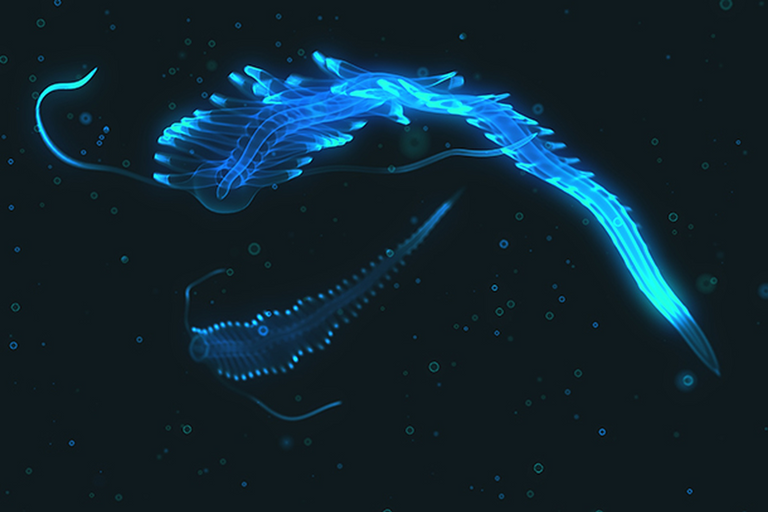
Photo Credits: Danielle Venton
An article by Jorge Hernández-Urcera and Ángel Guerra
ECOBIOMAR, Institute of Marine Research of the CSIC, Vigo.
What is the abyssal zone? Some features
With the development of technology, man has been able to explore
the seabed and directly contemplate the face of Nature at levels where the distance to the surface prevents the arrival of sunlight: this is the kingdom of twilight and darkness!
In this "kingdom" we see unique characteristics: The light of solar origin disappears completely at depths greater than 500 meters. On the other hand, oxygen decreases with depth.
The temperature also reaches minimum values in these depths: it never exceeds 4° C, and in the deepest areas it approaches zero degrees! Finally, the pressure increases enormously, when descending in the body of water: reaching up to 1,100 atmospheres of pressure in the deepest places, how much pressure is that? some say it is comparable to a huge bus falling on you. Ouch!
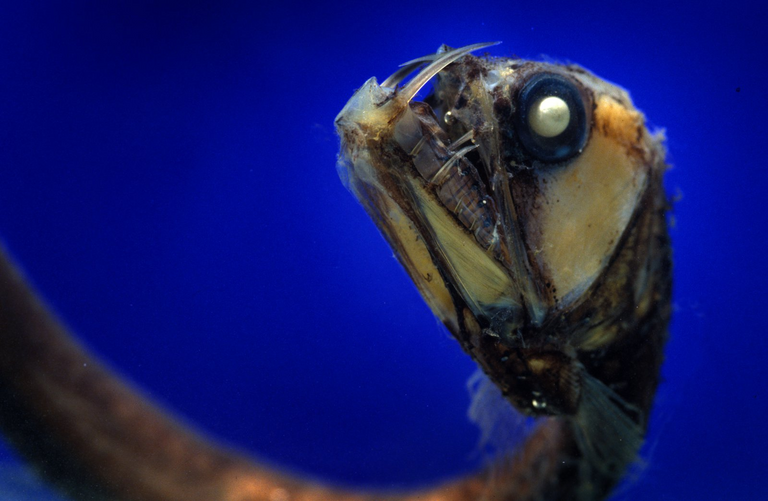
Photo Credit: Mark McGrouther (Sloane's Viperfish)
Hydrothermal vents: is there life there?
Less than 40 years ago, while studies were being carried out on the equilibrium of thermal flows, one of the most important discoveries of our time took place: the discovery of hydrothermal vents in the Pacific Ocean. Technicians and scientists did not expect to find the extraordinary landscape of black vents colonized by dense populations of exotic and unknown animals, such as the giant tube worm (Riftia pachyptila).
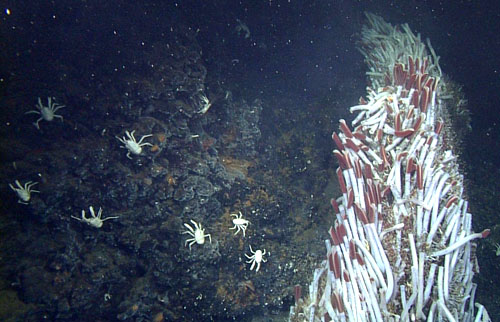
Photo Credit: Ronald Spelz and Lonny Lundsten
Hydrothermal vents are sometimes called "oases" of life from deep sea beds. Why? by the high number of individuals in populations of large invertebrates in the middle of the vast abyssal plains. However, as in other ecosystems with extreme conditions like this, the communities of hydrothermal vents are simple systems. Biodiversity is low, but biomass is high and is maintained thanks to the abundant and constant contribution of energy. Incredible all this!
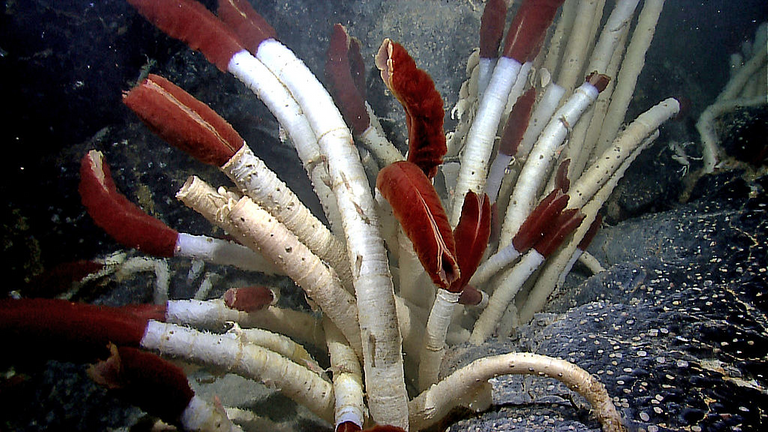
Photo Credit: NOAA (Giant tube worm)
In these peculiar environments lives the Vulcanoctopus hydrothermalis, which is a small octopus (no more than 30 centimeters in total length and 50 grams in weight), it is blind and albino! These octopuses keep their eyes, which are covered by opaque membranes and lack a lens; In addition, they do not have an ink bag either (unnecessary in this environment).
Whale carcasses in this place?
Whale carcasses are another curious habitat that is home to communities dependent on chemical energy! Thus, Craig Smith, from the University of Hawaii, was the first to observe, in 1987, communities in the skeleton of a whale found by chance in the north of the Pacific during a dive in the submarine "Alvin". Since then, the study of biological communities in whale remains and other large organic remains, such as sunken wood and kelp (kelp forests), has advanced rapidly.
First, the organisms that live in the abyssal zone eat the remains of meat that reaches that depth of a whale that has died, and then they take advantage of the gigantic whale bones as a refuge and live there.

Photo Credit: E/V Nautilus
The strange cephalopods and fish
One of the most surprising discoveries has been a strange squid with huge fins on its body and thin and extremely long arms, measuring 20 times the length of its body.
These squids were filmed in all the world's oceans by submarines of different nationalities.
From the data available, the new family Magnapinnidae, whose meaning is "large fins", has been created.
On the other hand, there are more and more numerous species of "Dumbo octopuses" (yep, as in the Disney movie) or octopuses with large ears and cirrus tentacles. These are the cirrad octopods that have their arms joined by thin and extensible veils that allow them to descend slowly through "medusoid movements", such as pulsations. Obviously, we can't forget about the incredible giant squid either.
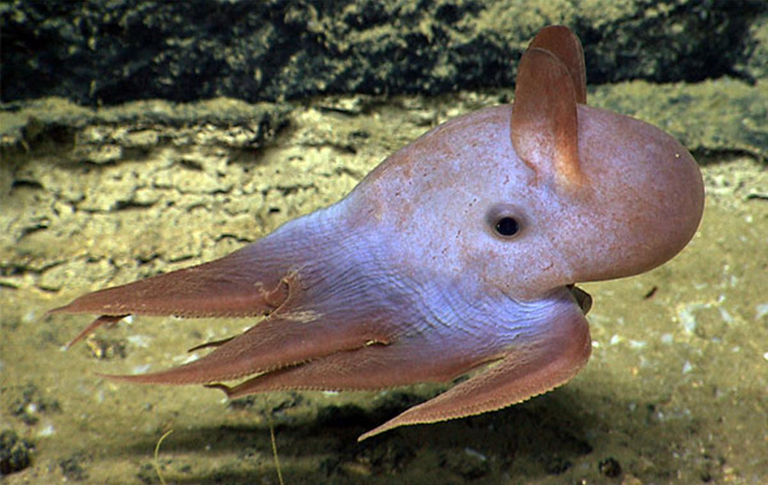
Photo Credit: NOAA "Dumbo octopus"
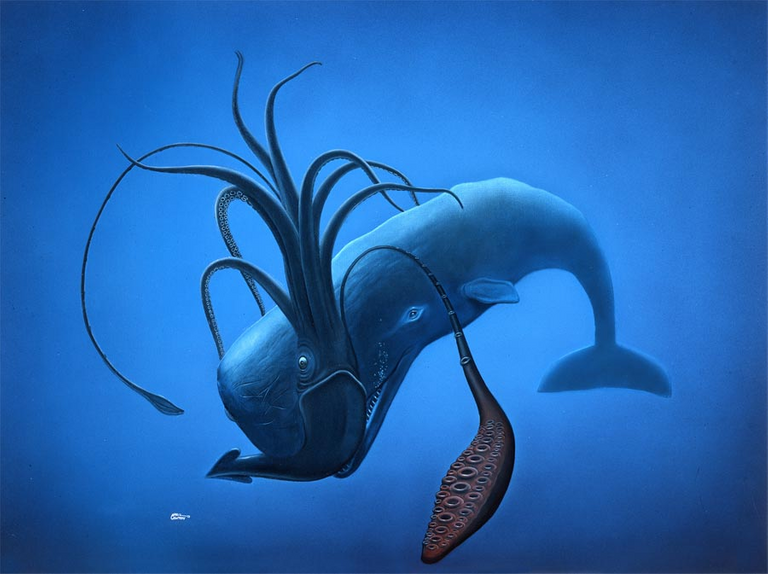
Ilustration Credit: April Lawton "Sperm whale VS Giant squid"
The wisdom that goes into the design of the creatures of the deep is even more impressive when studying the fish of the deep.
The bodies of deep-sea fish are elastic and soft, their bones are flexible, and their flesh resembles that of a jellyfish. Surely you already know the most prominent representatives of this section:
The lophiiformes (the famous Angler fish), which are characterized by their mode of predation: the first three vertebrae are modified, so that three filaments emerge from the head. The first of the filaments is the longest and is mobile, so it can be used as a lure. In the case of abyssal species, this lure lights up thanks to a process of symbiosis with bioluminescent bacteria. It's amazing right? Well ... there is something more incredible: the way they reproduce!
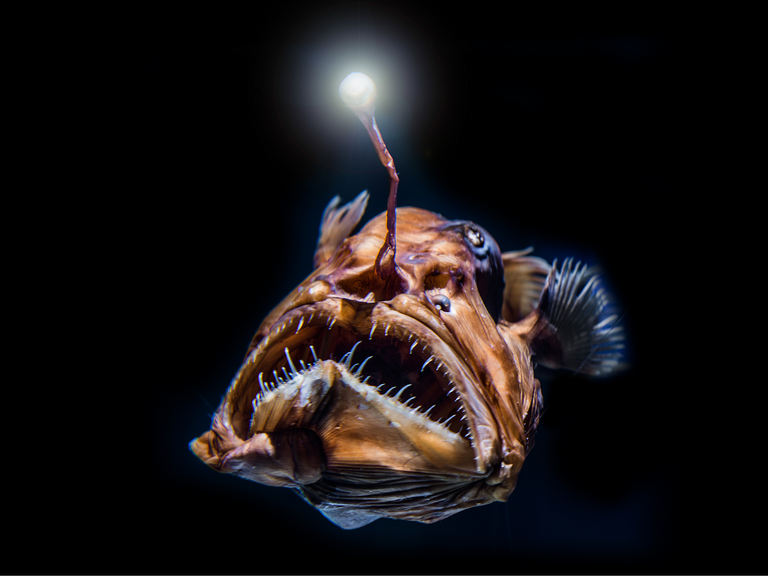
Photo credit: Toscamedia
Some studies found that only female specimens were captured and that no males were captured. Later it was observed that all these females had a kind of parasite near their genital organs, until scientists realized that this parasite was the male😱, about ten times smaller than the female. To mate, the male bites into the female's belly and merges with her body😨. The female provides nutrients and blood supply and the male is a permanent source of sperm. In this way, reproduction is ensured in an environment where finding a mate is not easy at all. This is absolutely extreme and creepy!
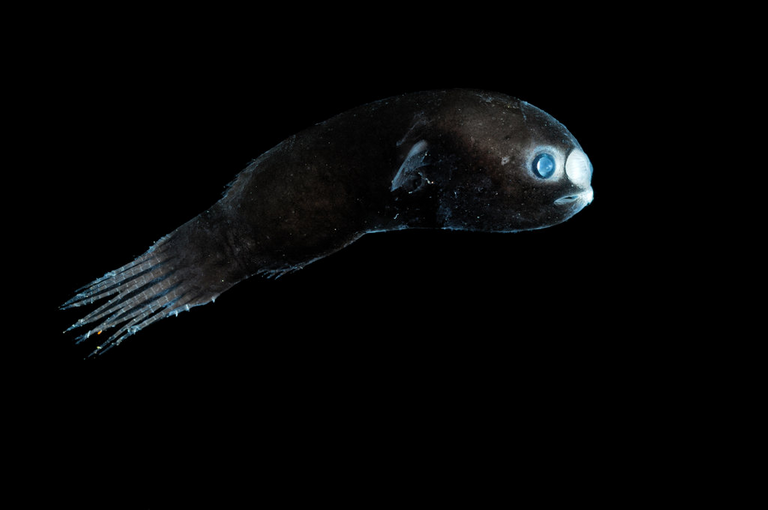
Photo Credit: Solvin Zank "Male Angler fish"😲
Would you dare to dive to those depths? now you know what you can find😅😱🦑

Wow, just wow! What incredible creatures. Thanks for posting.
Thanks for your comments @kansuze they're very very incredible marine creatures!
This post was shared and voted inside the discord by the curators team of discovery-it
Join our community! hive-193212
Discovery-it is also a Witness, vote for us here
Delegate to us for passive income. Check our 80% fee-back Program
Congratulations @juanbg! You have completed the following achievement on the Hive blockchain and have been rewarded with new badge(s) :
You can view your badges on your board and compare yourself to others in the Ranking
If you no longer want to receive notifications, reply to this comment with the word
STOPWooo, here they are ^^ I am a big fan of hydrothermal vents as life on earthc started out there, but these little "monsters" down there in the seas raise some huge respect in me .. The Sloane's Viperfish loos just scray but awesome ;) .. Sending your post to OCD .. well done post again @juanbg ^^
Yeah! Incredible creatures down there, hydrothermal vents is of my favorite topics too!
Thanks for the support bro!😊🐬
This is a great post!! We really appreciate your work and efforts.
To support your work, we have also up-voted you using our
@dna.orgCuration Trail ✅!Our curators liked your post!
We hope, you'll keep up the good work, and continue posting such articles in the future as well!!
Have a nice day!
Best,
Team DNA 🧬
(Densifying Nature-Appreciation)
By the people ⚪ For the people
You can also consider supporting us with a small delegation / donation.
We are non-profit 😊.
It helps us keep the project alive and running!
Awesome, another fantastic post dude! lots of amazing information about these fascinating creatures.
I love the information about the 'parasitic' male Angler Fish... really strange and and unusual, and yet a perfect adaption in the depths of the ocean. They have to make the most of any opportunity.
That's right @dannewton! It's amazing how the adaptations are in those places, Amazing Nature!